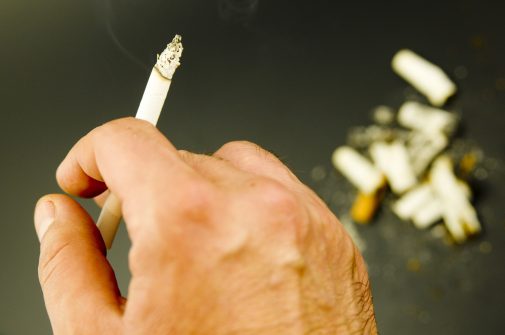5 things you don’t know about tobacco

In 1964, the Surgeon General released Smoking and Health: a report of the advisory committee of the Surgeon General of the Public Health Service. This was the first report in a series now referred to as the Surgeon General’s Report, with the most recent report released in 2014. It was the first government report to link tobacco use to specific diseases.
Since then, we have learned a great deal about the devastating effects of tobacco. The majority of people know that smoking causes lung cancer, that secondhand smoke has deadly consequences and that nicotine is addictive. But here are some lesser known, and surprising, facts about tobacco. If the conventional “smoking is bad” adages don’t help you kick the habit, maybe these will!
- You may have heard that smoking causes wrinkles and yellowing teeth, but it also has an effect on your hair. One study found a significant association between premature hair graying and cigarette smoking.
- Smokers are 30-40 percent more likely to develop type 2 diabetes. Smokers with diabetes are at risk for serious complications such as amputations, nerve damage and blindness.
- Each cigarette smoked reduces your life span by 11 minutes; one pack totals more than 3.5 hours, and a pack a day for a year totals more than 55 days.
- Different tobacco products deliver various levels of tar and nicotine. One hookah session delivers 25 times the amount of tar than the traditional cigarette.
- One in five deaths in the US is attributed to tobacco; that’s more than motor vehicle accidents, HIV deaths and homicides combined.
According to the Centers for Disease Control and Prevention, 68 percent of smokers want to quit smoking. Quitting smoking is difficult and takes an average of six to nine attempts, and recent research suggests it may take up to 30 attempts.
Research also shows that individuals who seek counseling to help quit tobacco have greater success than those who attempt to quit “cold turkey” and those that combine counseling with medication have the highest success rates. If you are interested in quitting, there are statewide and local resources available.
The Illinois Tobacco Quitline (ITQ) is a free telephone counseling service available to Illinois residents. You can contact the ITQ at 1-866-QUIT YES, or find out more at www.quityes.org. Tobacco Free Lake County (TFLC) is a program at the Lake County Health Department and Community Health Center (LCHD/CHC) that offers individualized, group and telephone tobacco cessation counseling with a certified tobacco treatment specialist (CTTS). Contact TFLC at 847-377-8090 for a consultation or to make an appointment with the CTTS.
You can also attend a free presentation at Advocate Condell’s Cancer Resource Center on September 21 at 6 pm. The presentation, Stop Smoking and Start Living: Get Help to Live Tobacco Free, will cover effects of and facts about tobacco and second hand smoke and carbon monoxide screenings. There will be an opportunity to sign up for quit groups and discounted resources available to quit. Register by calling 1.800.3ADVOCATE and mentioning class code 5C39, or register online here.
Danielle Ryan is a community health specialist with the Tobacco Free Lake County program at the Lake County Health Department and Community Health Center. She has worked in various aspects of public health for the past eight years. Outside of work, Danielle enjoys developing new recipes, going to the theatre and spending time with her husband and son.
Related Posts
Comments
2 Comments
About the Author
Danielle Ryan is a community health specialist with the Tobacco Free Lake County program at the Lake County Health Department and Community Health Center. She has worked in various aspects of public health for the past eight years. Outside of work Danielle enjoys developing new recipes, going to the theatre and spending time with her husband and son.


















Do you have similar information regarding smoking marijuana? Are there just as serious dangers? Does Advocate offer any programs to assist those who are trying to quit this habit?
no but I have an uncle named paul and he smokes every holiday probably evreyday